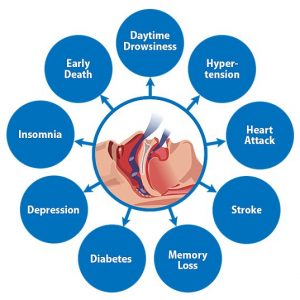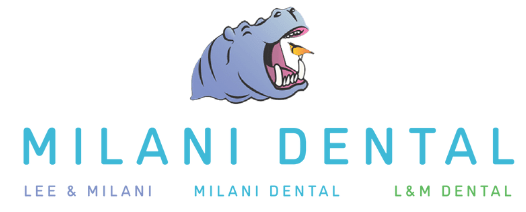Treating Sleep Disorder Breathing
Think you may have a Sleep Disorder?
Milani Family Dental focuses on the treatment of patients with sleep disordered breathing problems, including snoring, obstructive sleep apnea (OSA), and CPAP intolerant and noncompliant patients. Dr. Namhee Lee leads our OSA clinic, which is in the process of being certified as a qualified facility for dental sleep medicine by American Academy of Dental Sleep Medicine.
Dr. Lee knows how depleted sleep quality can detrimentally impact a person’s health and happiness, so she has dedicated her Schertz and Greater San Antonio dentistry in Dental Sleep Medicine to help her patients realize their best quality of sleep.
At Milani Family Dental, we provide sleep screening with the Ares Watermark, an eight-channel sleep study device, which allows us to accurately screen patients for sleep disordered breathing. We screen every patient for airway issues and focus on health issues that might cause sleep disordered breathing, including a small airway, tonsillar hypertrophy, hypertension, type II diabetes mellitus, bruxism, gastroesophageal reflux disease, depression, and others. We also offer home sleep studies to patients in need of further intervention concerning possible sleep disordered breathing.
To treat our patients, we first use an Orthopantomograph (OP) 3D dental imaging unit to measure our patient’s airway. Our oral appliances are then created using the Eccovision Pharynghometer that visualizes and measures the size and collapsibility of patient’s airway. We then perform an evaluation using our Rhinometer, which is for ruling out any blockage in nasal ways in order to fabricate the exact measurements for an oral appliance using mandibular repositioning to assure airway patency during sleep. In general, patient compliance with an oral appliance averages 86%, versus just 36% patient compliance with CPAP.

What is Obstructive Sleep Apnea?
Snoring is the most common warning sign for obstructive sleep apnea (OSA), a potentially serious sleep disorder caused by complete or partial obstructions of the upper airway. For patients diagnosed with OSA, one recommended treatment is continuous positive airway pressure (CPAP) therapy, which requires you to wear a mask during sleep that is connected to a machine that keeps your airway open by providing forced air through flexible tubing. Although CPAP therapy is effective, it’s not for everybody, especially patients who suffer only mild to moderate sleep apnea. If you are not able to tolerate CPAP therapy, or would just like a less obtrusive option, you should consider a sleep apnea oral appliance, which is more comfortable, quiet, portable and easier to wear than a CPAP mask.
What is Oral Appliance Therapy?
Pioneered by dentists, oral appliance therapy is used for the treatment of obstructive sleep apnea and snoring in adults. Worn only during sleep, a custom-made oral appliance fits like a sports mouth guard or orthodontic retainer and effectively prevents the airway from collapsing by supporting the jaw in a forward position. According to the American Academy of Sleep Medicine, oral appliance therapy should be the first line of therapy for patients with mild to moderate sleep apnea. For example, if a patient is diagnosed as positive for sleep apnea, then oral appliance therapy is the recommended treatment. However, if a patient’s results return with an AHI over 30 (severe sleep apnea), then the patient is referred to a sleep lab for CPAP titration. Medicare and most medical insurance plans cover oral appliance therapy. For sleep apnea treatment in Schertz and Greater San Antonio, don’t hesitate to reach out to us at Milani Family Dental!
